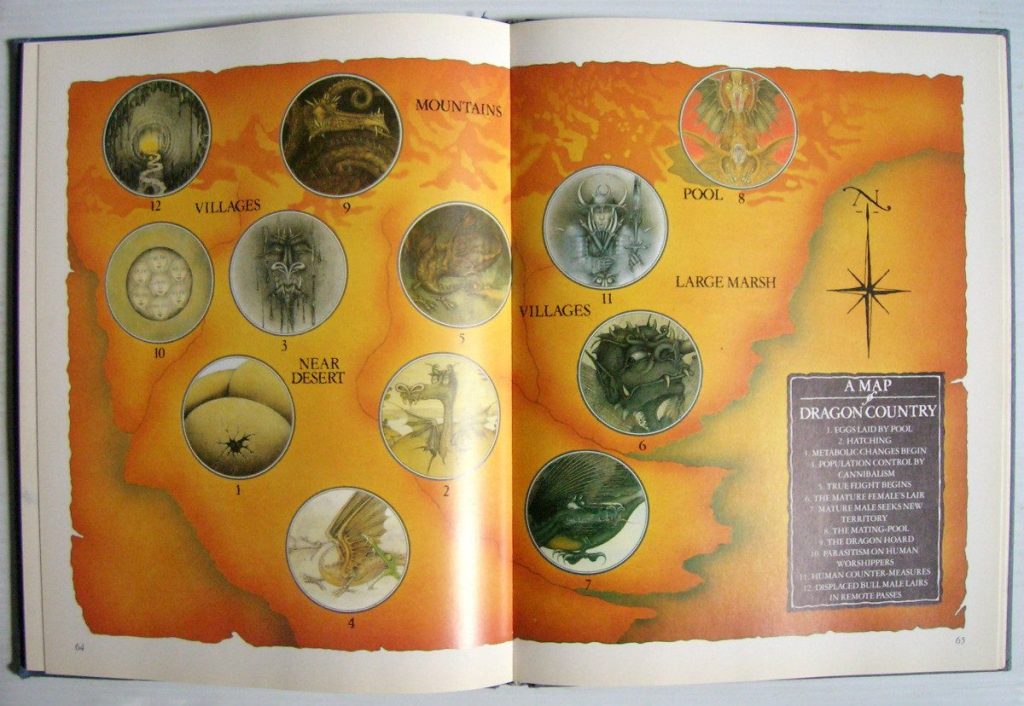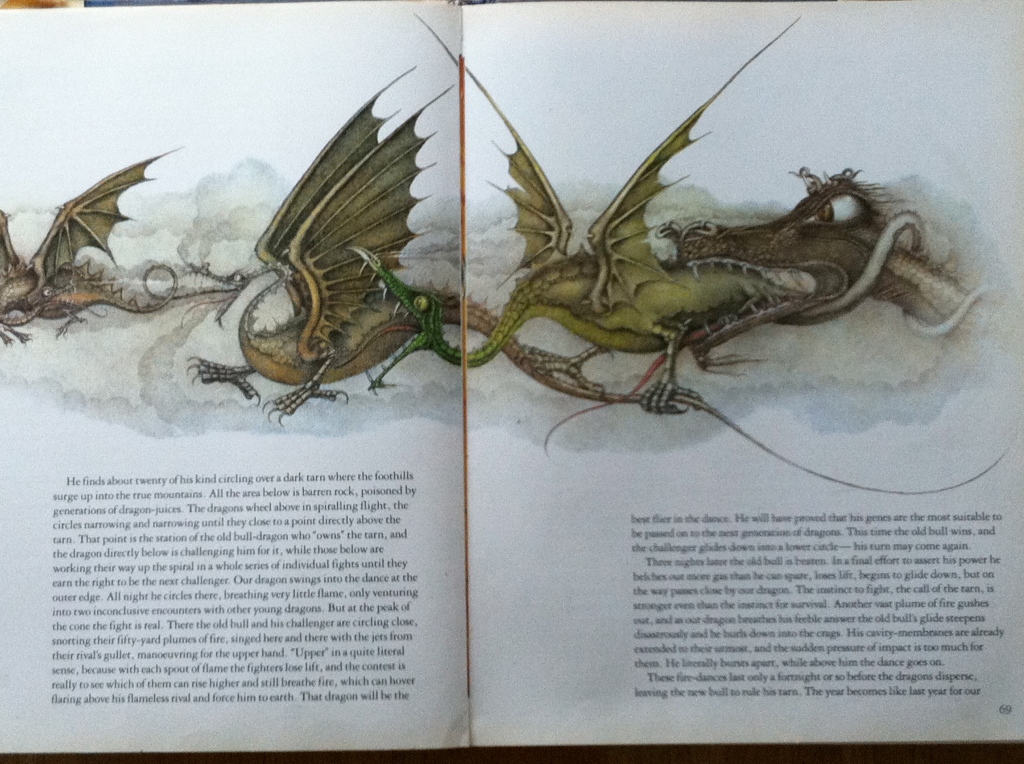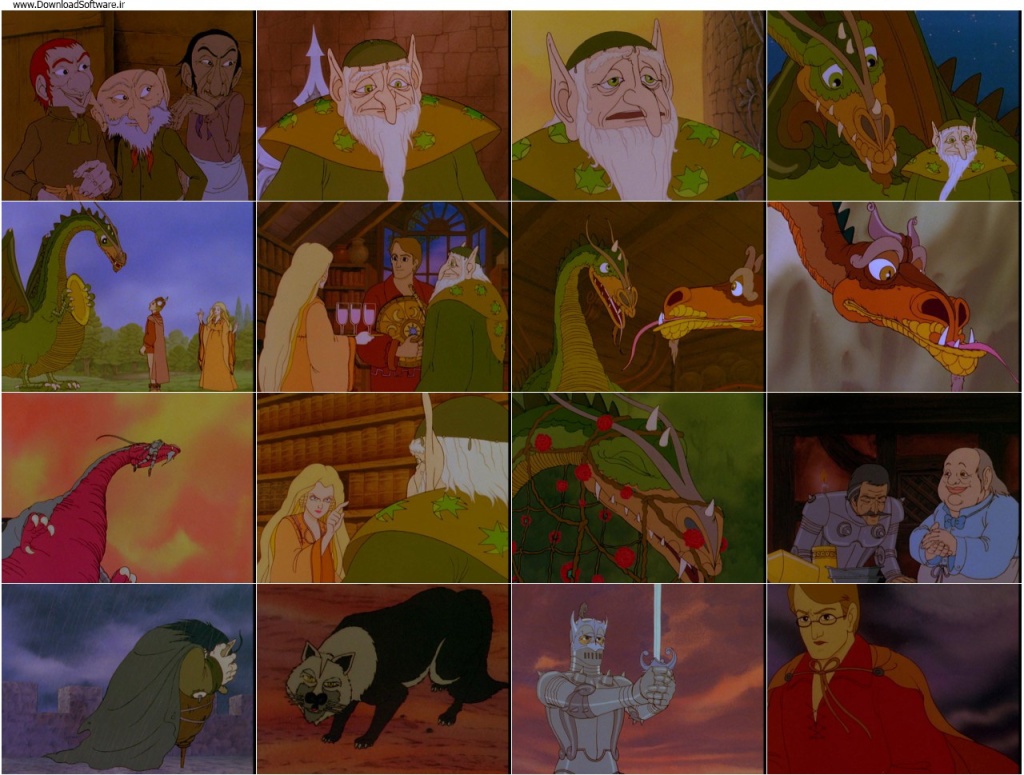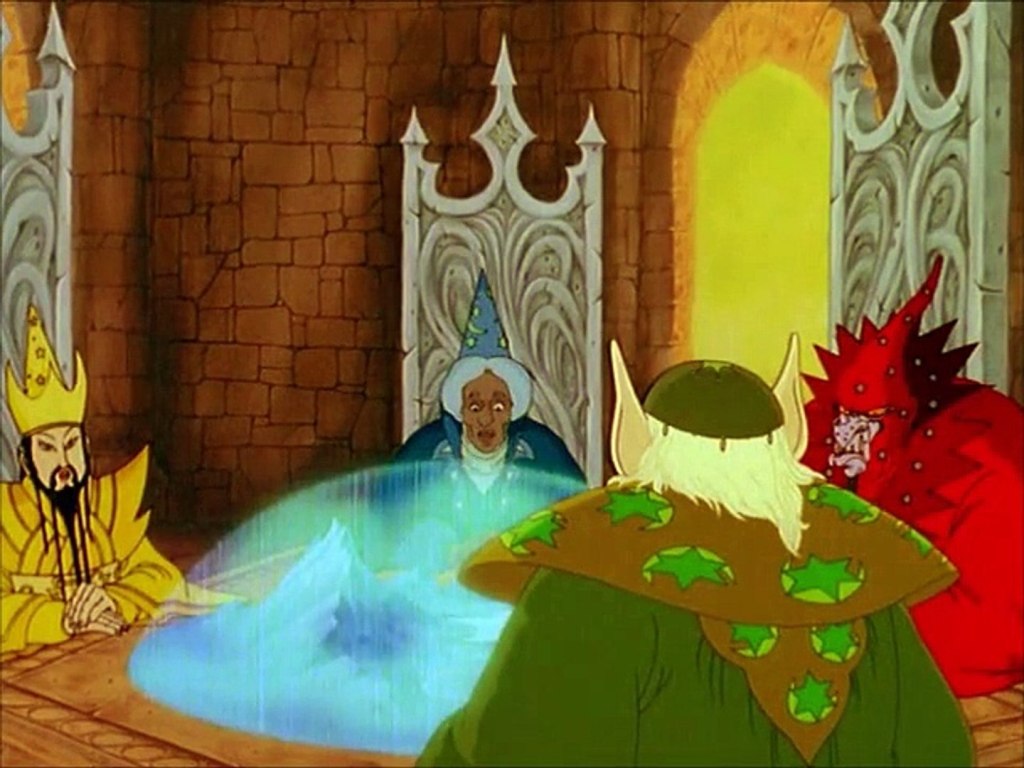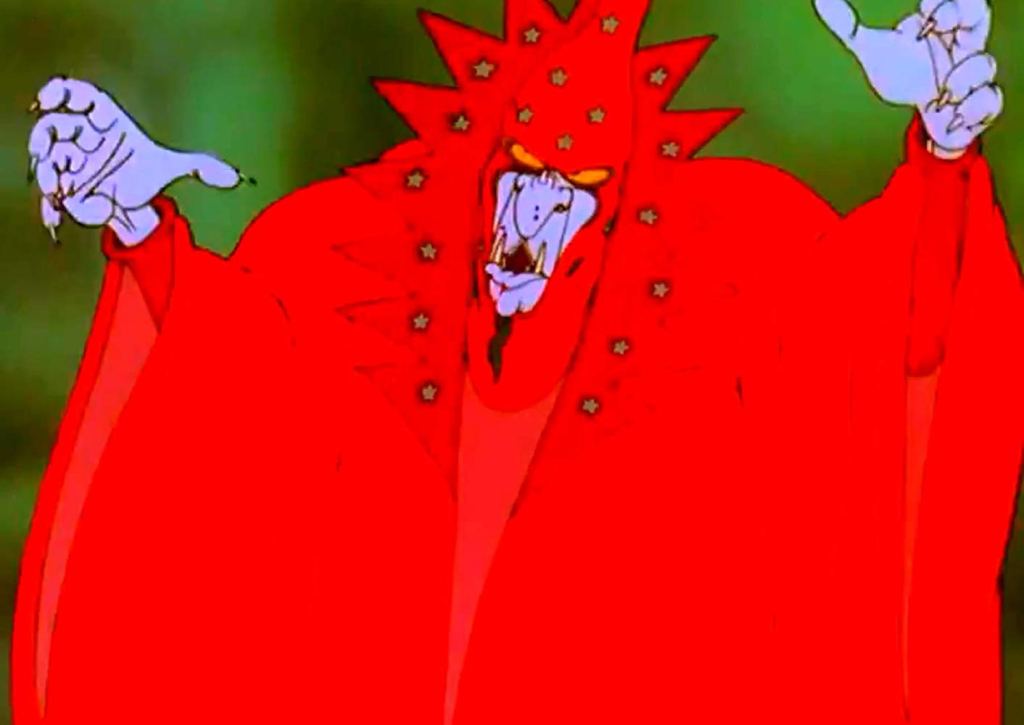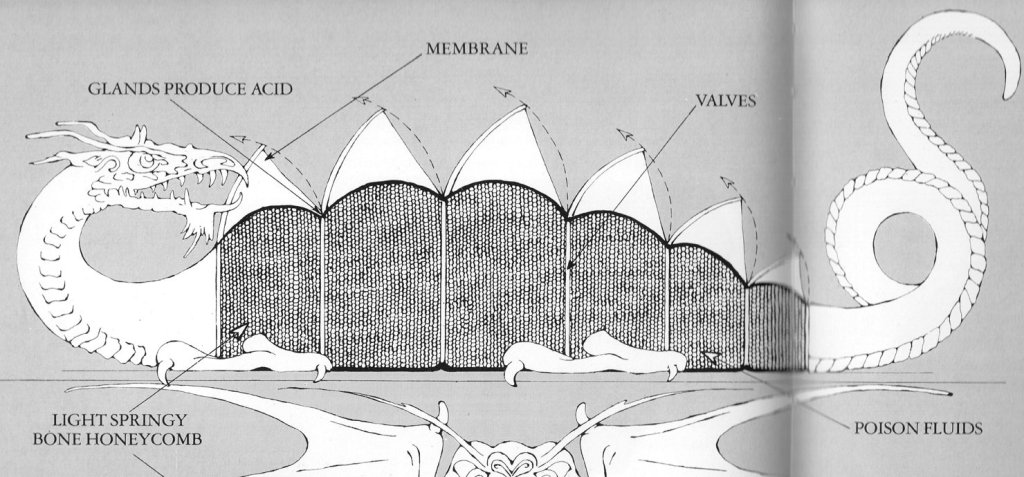
I read Clifford D. Simak’s 1970 Out of their Minds in its Heyne Verlag German 1971 edition (translated by Birgit Ress-Bohusch). A trashy sleeve with properly garish art by C. A. M Thole: a small blurry red convertible (a Matchbox-sized vehicle) is being threatened or burped by huge fiery looking winged dragon and a ludicrously huge demonic creature with a red fluttering cape. The demon almost looks surprise about what is about to happen in front on him. The German title “Verteufelte Welt” (more like Bedeviled World or Infernal, Devilish World) does not really help to attract more attention from its readers. The appeal to Christian demonology or Satanist plots, sects etc falls short. The following is an attempt to see how and why Out of Their Minds takes further all the recent discussions about tulpomancy, meme magic, ‘thought-forms’, egregores etc As to why all this perilous policing about various intrusions(escapes?) from the imaginary worlds into our own. Minds – locates the human mind as the major culprit and by extension only the human central nervous system (head) as a laboratory of the mind. I think here we have our difficulty dealing with something else than the imagination of certain portion of a certain species (even mindfulness apps are still not full because they are very selective in how they locate minds and place them only into overworked westerner skulls). We live in a lively (and deadly) exciting time where minds (and imagination by extension), reason (as Moynihan puts in his X-Risk “To realize that reason was at risk was also to realize that reason just is the ability to risk new ways of seeing the world”) jeopardize various other settled opinions about what minds are and how mind came to be. The evolution of all sorts of minds seem only partially settled inside the cranial case spacewhen we consider that there is all these minds that are not encased, that developed inside non-skeletal, non-vertebrate, ‘soft’ underwater bodies (especially thinking about certain convergent trends within Metazoa multicellular evolution – multicellular minds that would ecompass both vertebrate and non-vertebrates – Peter-Godfrey Smith is a good place to start).
Clifford D Simak’s book has a much wider scope imho beside the most obvious one: the dangers of wishing or calling imaginary things (not excluding various very helpful abstractions) into reality and overcoming the ill-effects of such releases into the world, effects that have a tendency to get externalized on others (*least protected). More importantly there is an ambiental, environmental sense of these intrusions – where nobody seems to be immune to these intrusions). Nowadays it is almost impossible to ignore this simple fact. There are many good takes on why so many of these self-fulfilling hypermediated prophecies are at work all around us. At the same time the most obvious (so as to be ignored) is maybe that such intrusions have stopped being the obscure realm of mere specialists (philosophers, futurologists, cultural critics, cognitivists, media gurus, technoshamans etc). Almost everyone is part and parcel of it, at we can agree that we are all the time being exposed to various disruptive fictions and for-profit imagineering/innovation.
So this becomes a common task – to see why and how this hardcore ontological oscillation plays out and where does it lead us. The spillover has not only been the fact that a lot of imageeneering has always been employed and involved (thinking how Scifi writers in Japan have been involved in World Exhibtions in the 1070s), but since Sept 11 at least, different imagineering efforts (I use this both in it’s devious Disney sense as well as a general term for cognitive labour) from professionals (be it the movie industry Ridley Scott – Pentagon Pentagon interactions etc or known postcyberpunkers such as Neal Stephenson consultancy for Blue Origin/Bezos sub-orbital spaceflight company) etc have been directly employed by governments and the private sector to lot out future catastrophist scenarios. The miltiary-entertainment continuum would go so far as to even endow a certain cinematic aspect to all preemptive action against various so-called ‘rogue states’ or even allow for institutionalizing our current 6th Extinction via X-risk imagining and management. Imagination does not create or speculate in a vacuum, it is a way to bridge the gulfs btw the stars. It allows flights-of-imagination where there is no data available or even a sort of feed forward that can call upon elements of sensibility that lie beyond perceptual consciousnesses, and even allow for things that can estrange us, delight, entrance or heighten our lives or express what has become unthinkable or unreachable nowadays.
Why is this book on top on my obligatory ‘imaginary ecosystems’ reading list?
I will not do a regular review of the book or try to bring it into the orbit of Simak’s larger oeuvre. The one other book I explored on Goodreads is Way Station. Out of their Minds – his 1970 book maps out impossible border-crossings, btw what is considered the imaginary proper and the real, btw fictional and the hard facts, an illegal border crossing that has become very casual, increasingly acquiring agential character, operativity and universality.
What is most endearing about it – is that this book does not make any grandiose theoretical claims. Also, it is not the first piece of fiction to incorporate a theory about fiction in its fictional story mesh, even if it still is a first person POW witnessing weave. Above all, such alarmist blurring of real/weird/strange is incredibly exciting and disturbing. Today we hear it everywhere – ‘meme magic’ is omnipresent, and it is almost immediately related to some trauma linked to toxic meme wars or the rise of the most unsavory NRx neoreactionary doctrines.
From payed troll factories, Reddits to 4chan dunk memes, everybody is thrilled to be playing a speculative sorcerer’s apprentice – while reality keeps unwinding, with everybody either profiting or decrying the banned and orphaned creations taking over their creators (with a caveat – that almost all pop imaginary characters are now owned by a few humongous IP franchises).
Even before all that, for Simak’s very human heroes and heroines, it is a dangerous and mortal time. They are almost accidental suffering the effects of this unhuman encounters. They are mostly agnostics, convinced materialists and what one might call practical people. Outer dimensions (in both Lovecraft’s or Simak’s) in keep naturally endangering very down to earth non-fictional human creatures.
While clearly being a non-believer is not an option, then not being one of those creatives of franchised worlds, or crackpot speculators or a purveyors of incensed theories about the world becomes life-threatening as well. Trying to keep factual, grounded, mechanistic-materialistic is risky as hell and seem to be part of a certain post-truth naivete. One does not have to strive for a poor imagination today, since for many it is still a question of a collective incapacity to imagine the effects of inequalities. Imagination is always under “crisis”, there is always a threat to imagination – a threat of both “not imagining” the horrendous effects of climate change as well as the “lack of imagining” a better, less damaging future.
Maybe the difference btw getting burned by dragon fire or squashed by a Godzilla, blown by a tornado or suffering a radioactive meltdown was never so clearly drawn. Since the stakes become so large, the scale is so spread-out, the situation already hyperobjectual, the choice of being a superheroine, a Pokemon monster and/or a supervillain is almost a requirement. Being mere mortals means being dis-empowered, exposed, unemployable, red-lined, or uninsured against the most obnoxious threats that do not figure on any insurance policy. Outside the incredibly remote (and quite horrifying) existence bubble of Norman Rockwell’s 1950s whitewashed suburbia, an increasingly less and less idealized Western contemporary reality abounds, blocking out all those unthinkable truths, where very real ‘only imagined’ (imaginary just for the privileged few) lives and dystopian neverlands abound. Imagination in fact is very important not in its selective capacity or (like consciousnesses) but like reason able to unsettle – the old opinions. It is actually the only possibility to experience (even relate to) what is beyond the experiential horizon. It can offer you a relatively safe passage trough a Black Hole, or ascertain what might happen when jumping btw Star-Gates. It can even allow to metamorphose into a bug, an impossible insectoid other. It is also not just an easy reversal phantasy – permitting someone privileged to easily exchange places and face the terrors felt by those whose very lives are a constant struggle to make by and support their livelihood however they can. Mind you – these expunged ‘outer’ is only ‘other’ for the minds of Western Euro-American gated mental worlds. It is not just a matter of exchangeable perspective and of consciousness, that one cannot approach easily such scifi Nigerian reality as the one aptly described by Tade Thompson in Rosewater (Wormwood Trilogy). This one will stay as unreal, safely tucked away ONLY if fortified and encased withing the ever more selective – transmedia bubble. Imagination is infused by very real realities that one dares not think of, not only with ‘fabulous beasts’, and all these movements and border crossings, larger realities insist on everybody with a life of their own and even with a politics of their own.

While action-packed – Out of Their Minds speaks powerfully and cogently about how all existing (no just simply mind- based) creations past, present or future were never our own. The lack of control over our lives is mirrored by such inner mental permeability that was always there. We only know dare talk or allow for a wider, much more unstable (panpsychist?!) world. And this does not singularize human reason – it just brings the same wider response-abilities into cosmic play. In a way for Simak it is exactly the opposite of being locked-in, quarantined imaginary creations can never stay locked for long. They swap genes & mutate almost at the expense of every other living beings. Simak opens up the question of how we might bear response-ability for animating such slippery imaginary surfaces. Out of Their Minds – makes clear that there is no brain-barrier to keep things out or permanently in. Yes, minds are just a station, busy hosting a wider world, not just passive replicators of memes, since they do physically suffer the effects of these imaginary fevers good or bad. Minds are not boxes where mere ‘ideology’ takes place, where superstition or for that matter artistic or poetic creation abounds. What Out of Their Minds offers us is a pervasiveness of such imaginary proclivity, a tropism of what was never confined to minds (or human minds). We get this by following the mis-behaviour the misadventures of non-containable non-self-contained or impermeable processes that allow impossible combination, that shout each other out (like Godzilla monster during nuptial season), carrying with them sense-surround of unhuman-mindfulness or what does not get carried into minds.
This maybe extends to various historical constructions, the invention of tradition, official accounts of the way it played out in various periods of human history. Not to slip in cultural relativism, realities escape minds even faster than they escape history book, taking a life of their own – becoming extremist revival paradises (or hells depending). The abuse of historical middle ages is such a case in study. A reality stocked up by national feelings, money & grandiose monuments of a fabulous past, ethno- glorious fantasies enlivened by movies, fiery speeches and historical novels – do cut, burn and slash.
Historical reenactments (what is normally not regarded as mere cosplay) recruit volunteers, perform and do search for extras to engage them in imagining various battles (such as the American Civil War in Simak’s novel). People do dress up willingly for various historical occasions playing their favored version (enemy or friend), giving their own ethno-political spin to local medieval history. What was disregarded as poorly researched Christian Neo-Templar knighthood gameplay (as in Breivink’s manifesto’s) or puritanical Moslem Wahhabite return to Islam’s origins has a life of its own, it feed-fwd into the present. A new book (which i have no read) – The Devil’s Historians: How Modern Extremists Abuse the Medieval Past (2020) by Amy S. Kaufman and Paul B. Sturtevant practically takes the preferred versions of today’s nationalistic Middle Ages at their face value, although, as mentioned above, I would not put the blame just on experts or just the Devil’s historian masterminds.

Firstly Clifford D Simak does not separate older from newer imaginary (past and present fabulations) creations (in a sense I would not even call them creations since this always presupposed a creator or a clock-maker) and this I find intensely attractive. These past fictional productions are never past, they do not just peter out. Following the book’s trail, one might say they just have difficulty intermingling, niche-sharing and coexisting with the new imaginary. There is definitely a social life of imaginary beings (what one might call today call tulpas, egregore or thought-forms), busy vying for attention and energy input. Simak in fact takes good old Devils – in a sense key trickster players of Christian demonology (Satan, Baphomet) and searches for their feelings and thoughts about revolutions of the mind, older worldviews being upended. What are the hegemonic imaginary battles that we ignore? Simak makes their position heard about, it makes them whine and be reproachful (to humans), complaining like border patrols or populist politicians about the unregulated flux of new imaginary migrants/aliens (the initial complaint is about UFOs).
Why does ‘ancien regime’ fabulation resent the new UFO or extraterrestrial beings, that steal the limelight? One has to speculate on that.
If there are rules in the out-of-the-mind realms, and if somebody refuses to play along with the old rules then there is a revolution that keeps on fomenting and spilling over. One might even say we see just the smoke trail of the imaginary happenings with very real stakes already going on (with new speculative fiction by non-European, trans, non-binary writers leading the way) fronted by Thade Thompson, Rivers Solomon, Sofia Samatar, Nndi Okarafor, Benjanun Sriduangkaew, Arkady Martine and many others. One can say this is just one of very few places where the good and the new seems to prevail.
In a sense the conspiracy of “out of the minds” is not of mindful of things (altough that maybe also it) but the fact that nothing stays long in the mind, and it seems to speak about the all-out influx that feels partially motivated by the same belief in (big ‘T’) Tradition. The Devil of Simak is the deviltry of “perennialism” and of harkening back at the top and repackaging any new as same old same old same old.
It feels as if only certain imaginary worlds got right of passage and they want to make it exclusive. There is this desecrated and maybe redolent imaginary realm that cannot keep up with itself. The artificial mock-outrage of Devils that are fighting for order and respect holds such ironic justice is very close to home. What cosmic joke!
The continuous production of new and more outlandish imaginary denizens has swamped the old segregation fiction/non-fiction apartheid. Clifford D Simak’s has this imaginary ecosystemic cross-over and Great Faunal Floral Imaginary Exchange spill over from the ‘outer’ into something else, here ‘outer’ and ‘else’ can both mean the unthinkable and post-probabilistic. Instead of the Copyrighter’s Inquisition and controlled usage, we have a place where Pluto Disney dogs, Tasmanian devils or Ren’s and Stimpy’s might run amok and disturb the golden sleep of dragons, no matter how much IP and fines are unleashed by the IP owners.

We could also say that the worst of the current toxic imaginary climate stocked up by online hate, let’s say the most horrific creations of racism and antisemitism can end up swamping minds (jumping epochs). The worst of Middle Ages, child sacrifices, etc vampirism, etc ends up possessing not only minds, but circulating outside of skulls. We see how they are literally taking over the most placid and seemingly naive Internet cartoon creatures, weaponizing the blandest and most dunk elements out there.
Low-brow vs elite culture wars are no more ‘outer’ than say the most ludicrous and sadistic bot-edited Peppa the Pig entering your child’s YT search. They are as vivid and offer the same proclivity as the so called- fixed theologically verified hierarchies of archangels and heruvims of old. That is why, at this particular turn of events, the forgotten gnostic proclivity of rearranging worlds rings familiar. The gnostics are an early (almost since the beginning branded as ‘dangerous’ by the crystallizing proto-orthodoxy) expression of such counter-expertize, of such unseeming reversals, unsettling temporarily all the hierarchies of heavens (call the unreal or what lies outside of immediate experience). This is why in Simak’s story, the Devil seeks some sort of truce, some sort of economical exchange of the imagination with their mindless host humans that should be made response-able as potential allies in damming and dampening this all-out disruptive imaginary.
The main character cannot but accept and diplomatically deal with the unruly material imaginary beings or events of the outer-realm when he is exposed to their action, to their overflow. He is listening only when he is swamped by the invading imaginary hordes that make havoc waking world, bending his reality from the outside in.
‘A crisis of imagination’ in this restricted sense might mean exactly this – the fact that only certain visions and imaginative futures gain upper hand at certain historical turning points or get right of transit from one side to another. As reality became stranger than fiction, none of the damaging fictions retreated peacefully, letting themselves exiled or mercifully euthanized. On the other hand, clearly, since at least 1989, certain forms of utopian thinking have been slowly petering out, while other forms of repressive imagineering have been gaining currency and even financial support, crowding and blotting out any alternative. Things are hopefully changing with a new generation of freshly unreal ideas, with pessimism of the mind and optimism of the deed cooperating for a less oppressive world building.

Out of their Minds also makes clear that the rules of the imaginary world do not stick to just the flat-eartherish variants, or the anti-Newtonian or even anti-Einstein kinds. They mutate and release their consequences onto the creatures that inhabit such worlds. There is a chance for the endangered humans (and many other more-than humans) critters that enter in and out of the imaginary realm that they must obey its rules. Both real and imaginary beings must make sure they survive their own sometimes arbitrary and aberrant rules. Always good to feel the G pulling even when leaving earthly gravitation. If in fairy tale world you can ONLY make three wishes, then 3 wishes it is. If Superman is vulnerable to Kryptonite, then so be it.

Fictionalization and hyperstition under capitalism (aren’t financial abstractions a painful and very effective way to see terrible capitalist imagineering or meta-fictions at work?) have channeled libidinal forces, extracted value and secured an increasingly powerful role by actively devaluing all other value forms (call them virtualities, utopian flights of fancy, reveries etc as u want), basically pushing to extinction (or at least in very restricted reservations) all other ways of imagining otherwise.
On the surface at least this is nothing particularly new, one can say that in the past, imaginary beings, spirits, sprites, various entities have always had to play it out against newer or former brethren although some form of symbiosis was always present (sic how Buddhism integrated older Bon nature spirits or Christianity the pagan deities and calendrical annual celebrations). The history of religions calls it syncretism and it is none other than (also) a symbiosis of the imagination. At the same time in late capitalism there has been always a more monopolistic, corporative and insidious way to incorporate and centralize older more heterogenous local animisms. A pluralism of spirits and multitude of demons gives way to prefab imperial personality cults. One such XX c transformation is the ominous Emperor cult of Japan – its construction specifically linked with the destruction of local shrines and their efficiency-trimmed reformatting, remolding the old chaosmos into a nationalistic weaponized matrix able to accomplish inhuman feats of violence and suffering.
Well, in the view of Out of Their Mind and Well and its fictional theory of an animated imaginary worlds – weird, shape-shifting realism is here to stay. Even being exposed to such theories accomplishes the unspeakable (here he joins Lovecraft and the Yellow King). Once thinking and playing with the idea that there might be intrusions and that imaginary friends (Slender men creepypasta) you’re done. The imaginal theories empower imaginary intrusions.
Far from the Stanford – Rand Corporation – Arpanet early stirrings of Internet and networking, this book does not make an appeal to any notion of virtual reality or a simulated universe. In fact, Simak’s version of the imaginary – barely escapes the ruthless Selfish-Gene evolution, a sort of stripped neo-Spencerian Social-Darwinism of the unreal. Luckily, imaginary creatures do tend to cooperate and even socialize with us and even strike a truce, even while exchanging pieces of themselves at the moment mostly seems in our disadvantage, they are not really trying hard to make us memetically -replaceable.
As an addition to “OUt of THeir Minds” I find excellent a recent book by Jimena Canales. Enlarging the scope of imaginary beings to including the scientific imaginary – she includes daimons that have been plaguing and animating thought experiments since the Greeks, non-superstitious imaginary beings that enliven the works of Descartes and Maxwell. Here we have something else indeed it seems, demonic creatures that have been lured by science and that can teach us something about physics and cosmology no matter how inhuman and more-than-human they might appear. Beguiling guiding spirits that can even fool our sense of consensual reality, reshape philosophical questions and change statistical odds in ways that never seemed possible before. They threaten the energetic and informational conservation laws of the universe and by so doing teach us something of great survival value. I have not read Bedeviled: A Shadow History of Demons in Science (2020) but it seems such an important addition to this ongoing discussion. Let us take a cue from such imaginary – but thoroughly- scientific beings, adept at making their devilish predecessors permanently retire.

